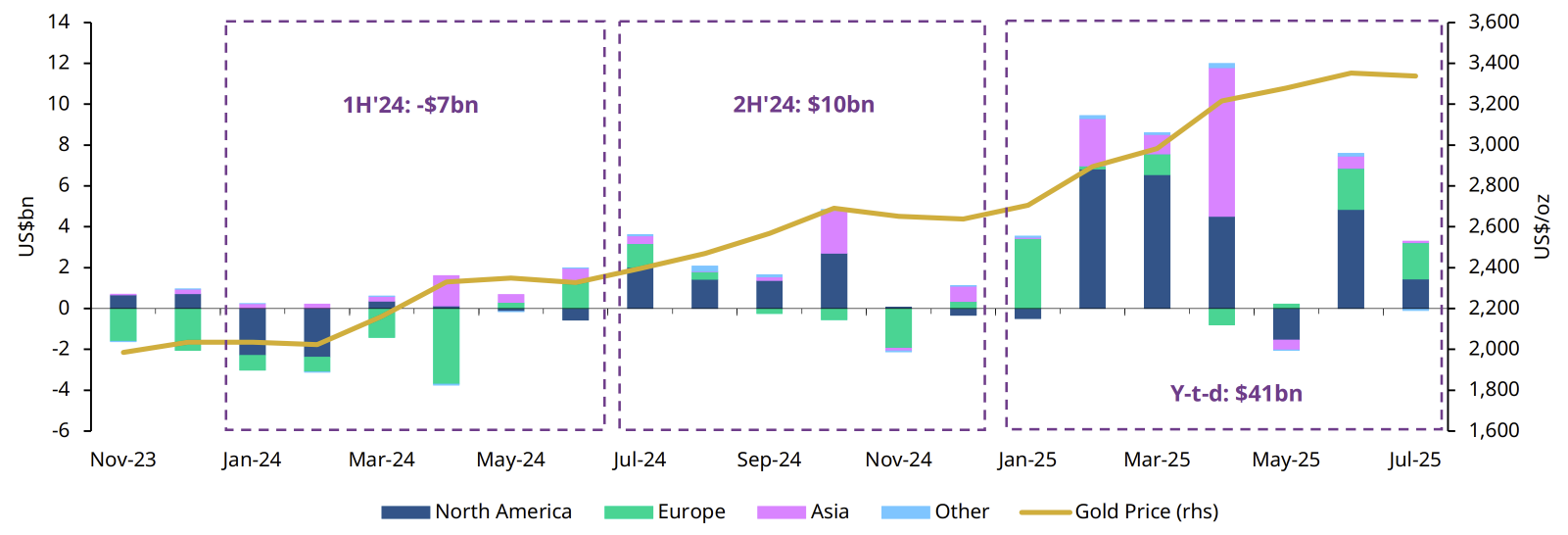Volumes edged higher
In July, gold market trading volumes reached US$297bn/day on average, 2.3% higher m/m.7 OTC activities averaged US$154bn/day in July, 2% higher than June. Although July OTC volumes were below the H1 average of US$165bn/day, they remained well above the 2024 average of US$128bn/day. Exchange-traded volumes also rose, averaging US$137bn per day, led by a notable increase in COMEX activities. But global gold ETFs’ trading activities fell 15% m/m to US$4.9bn/day yet far exceeding the 2024 average of US$2.9bn per day.
Total net longs in COMEX gold futures rose 12% m/m to 676t in July, with Money Managers increasing their net long positions by 4%. 8
While there has been evidence of some profit-taking in prior months, positioning now appears to have reset – giving futures investors room to rebuild exposure. We explore this shift in greater detail in our latest monthly Gold Market Commentary.


